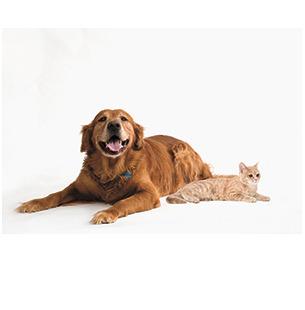Our busy lives often require companion animals to spend long hours at home alone. Some pets handle this separation well, while others experience increased stress. How we prepare, or don’t prepare, our pets for our departure will have a huge impact on our pet’s experience.
Is whining and crying (from you or your dog), part of your departure ritual? Do you negotiate over coffee? Does, “I’ll give you a treat if you don’t eat my couch while I’m gone!” or “Mommy’s got to go to work so I can buy your toys!” sound familiar? If so, your pre-leaving attention may be contributing to your pet’s stress.
Leaving the house without your pet should be done without an elaborate goodbye, but being calm is a skill you need to teach your pet before it’s time to go. It is helpful to have a specific place – like a dog bed, rug or a crate with an open door – that they can associate with a relaxed state of mind. Have your dog lay down on the calm bed while you are home and relaxed yourself (you have to have calm energy to create it). The more he practices being calm in your presence, the easier it will be for him to be calm without you.
Have him stay there when you leave the room, maybe with chew toys or activity balls. If he gets up, calmly direct him back and tell him to wait. He will soon learn to not to react to your coming and going. Many dogs start to get anxious from “pre-leaving” behaviors, like picking up keys. Be aware of your dog’s triggers and work to desensitize him while he is in a calm state. Pick up keys and open garage doors without going anywhere and keep your dog on his calm bed.
When it is time to leave, just go. The message you’re trying to convey is that leaving is not a big deal, not worthy of a farewell. Resist the temptation to sneak out when your pet isn’t paying attention as this can actually increase anxiety.
A dog with pent up physical energy is likely to have that manifest as anxiety, so draining energy is an important part of reducing anxiety for most dogs. A brisk walk or a game of fetch before work can help immensely. Rescue Remedy is a flower essence that can be helpful in reducing anxiety in pets.
Toys, puzzle balls and chew toys help some dogs by occupying the busy mind that gets anxious when bored, but will be ignored by some. Some animals will feel more secure with another animal in the house, but be careful – a well-intentioned friend might become double trouble.
How you greet your dog when you get home is important, too. If your dog greets you with enthusiastic barking and jumping, and you, in your best high squeaky voice, drop everything and say, “Pumpkin, I’m home, I missed you so, so much!,” you are conveying the message the separation was terrible and it’s lucky you both survived.
A dog with separation anxiety should be greeted with no fanfare. Walk in and do what you normally do, and never give attention to an anxious excited dog. Only greet your dog once he is calm, not whining, and behaving the way you desire. Then give affection for the behavior you want to create more of.
Separation anxiety is one of the leading reasons cited for pet relinquishments. Establishing a ritual for calm time will build your pet’s confidence and make it easier to be calm while you’re away. A good good-bye helps ensure a good hello.
This article was provided by Cobber’s Pet Pantry, 1415 Blake St. in Enumclaw. The shop can be reached at 360-825-7387. Website: cobberspetpantry.com.


